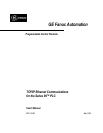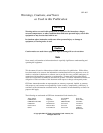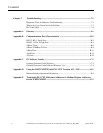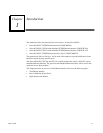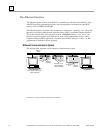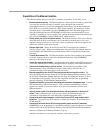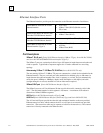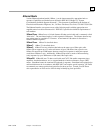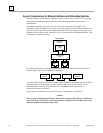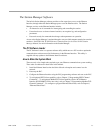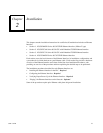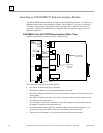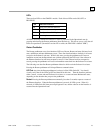
1-4 TCP/IP Ethernet Communications for the Series 90™ PLC User's Manual
–
May 2002 GFK-1541B
1
Ethernet Interface Ports
The Ethernet Interfaces provide ports for connection to the Ethernet network as listed below.
IC693CMM321 Series 90-30 TCP/IP
Ethernet Interface
AAUI Port
10Base-T Port (RJ-45) (Module version
FG or later)
IC693CPU364 Series 90-30 CPU with
Embedded TCP/IP Ethernet Interface
AAUI Port
10Base-T Port (RJ-45)
IC693CPU374 Series 90-30 CPU with
Embedded TCP/IP Ethernet Interface
Auto-sensing 10Base-T Port (RJ-45)
IC697CMM742 Series 90-70 TCP/IP
Ethernet Interface (Type 2)
10Base-T Port (RJ-45)
AUI Port
10Base2 Port (BNC)
Port Descriptions
10Base-T, RJ-45 port
(
Series 90-30 Ethernet Interface (10Base-T Type), Series 90-30 CPU364,
and Series 90-70 IC697CMM742 Ethernet Interface (Type 2))
The 10Base-T port uses a twisted pair cable of up to 100 meters in length between each node and
a hub or repeater. Typical hubs or repeaters support 6 to 12 nodes connected in a star wiring
topology.
Auto-sensing 10 Base T / 100 Base TX, RJ-45 Port
(Series 90-30 CPU374 only)
The auto-sensing 10 Base T / 100Base TX ports are connected to a switch device embedded in the
Ethernet Interface. They use a twisted pair cable (unshielded or shielded) of up to 100 meters in
length between the node and another node, a hub, a repeater, or a switch. The port automatically
senses the speed (10Mbps or 100Mbps), duplex mode (half duplex or full duplex) and cable
(straight-through or crossover) attached to it with no intervention required.
10Base2, BNC port
(
Series 90-70 Ethernet Interface (Type 2))
The 10Base2 port uses a 0.2 inch diameter 50-ohm coaxial cable and is commonly called “thin
wire”. The maximum length of a cable segment is 185 meters. A maximum of 30 stations is
allowed on a 10Base2 Ethernet segment.
AUI Port
(
Series 90-70 Ethernet Interface (Type 2))
and
AAUI Port
(
Series 90-30 Ethernet Interface (AAUI-only Type) and Series 90-30 CPU364)
The AUI and AAUI ports provide the electrical and mechanical interface to the user-provided
Ethernet transceiver cable, which connects the AUI or AAUI port to an external user-provided
transceiver. (The transceiver cable may be separate or built-in to the transceiver.) The external
transceiver is directly connected to the Ethernet cable.



